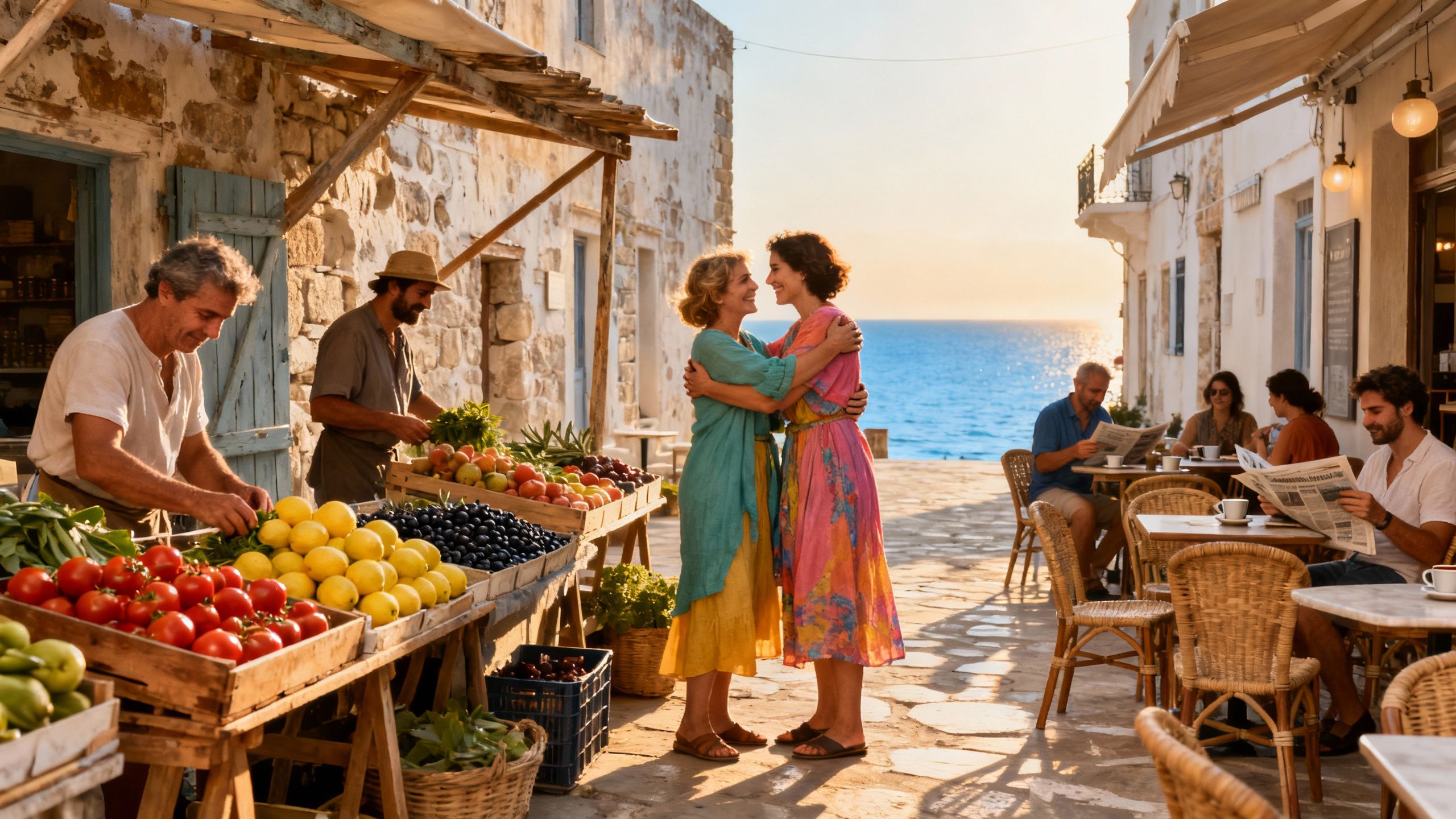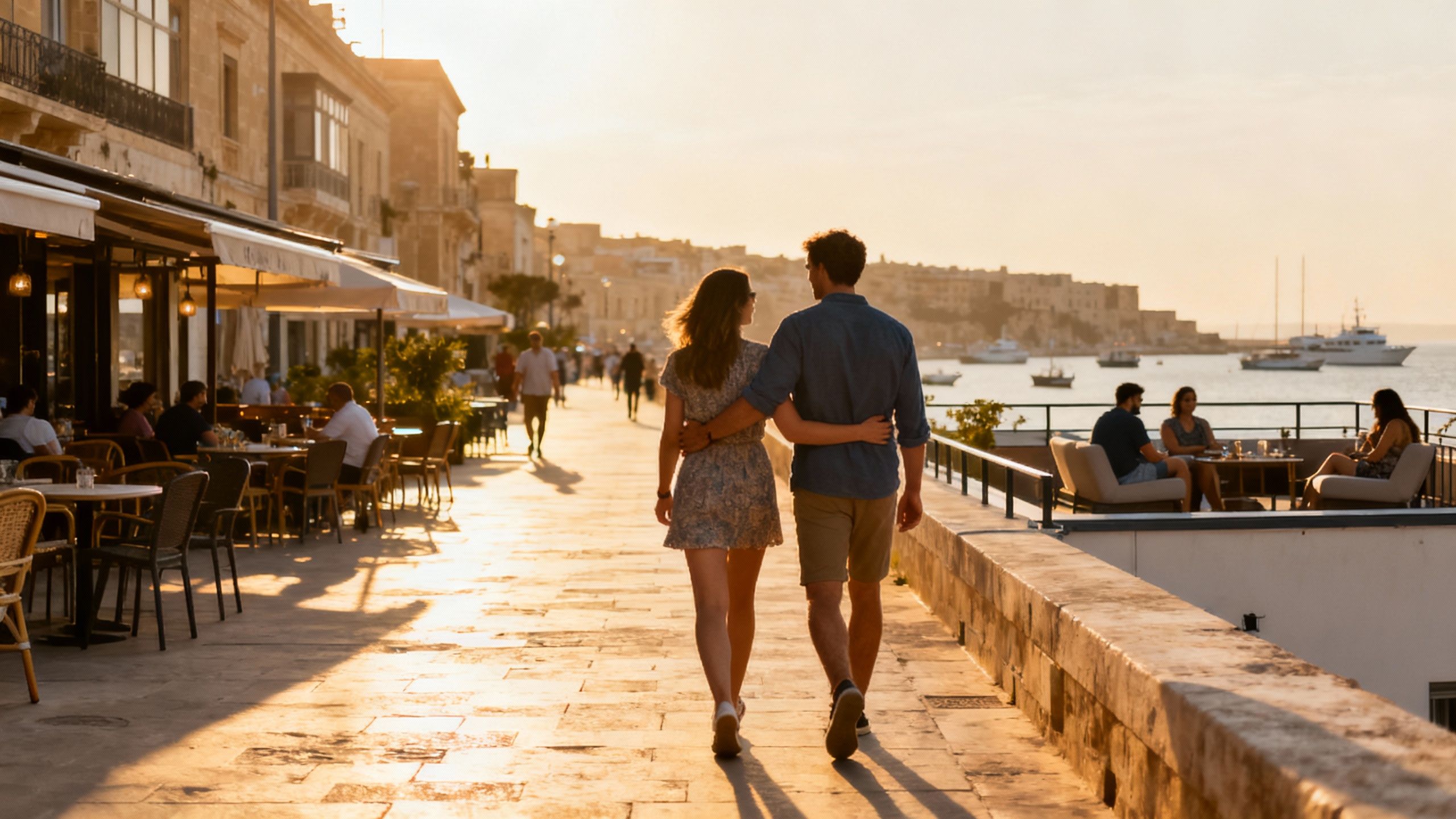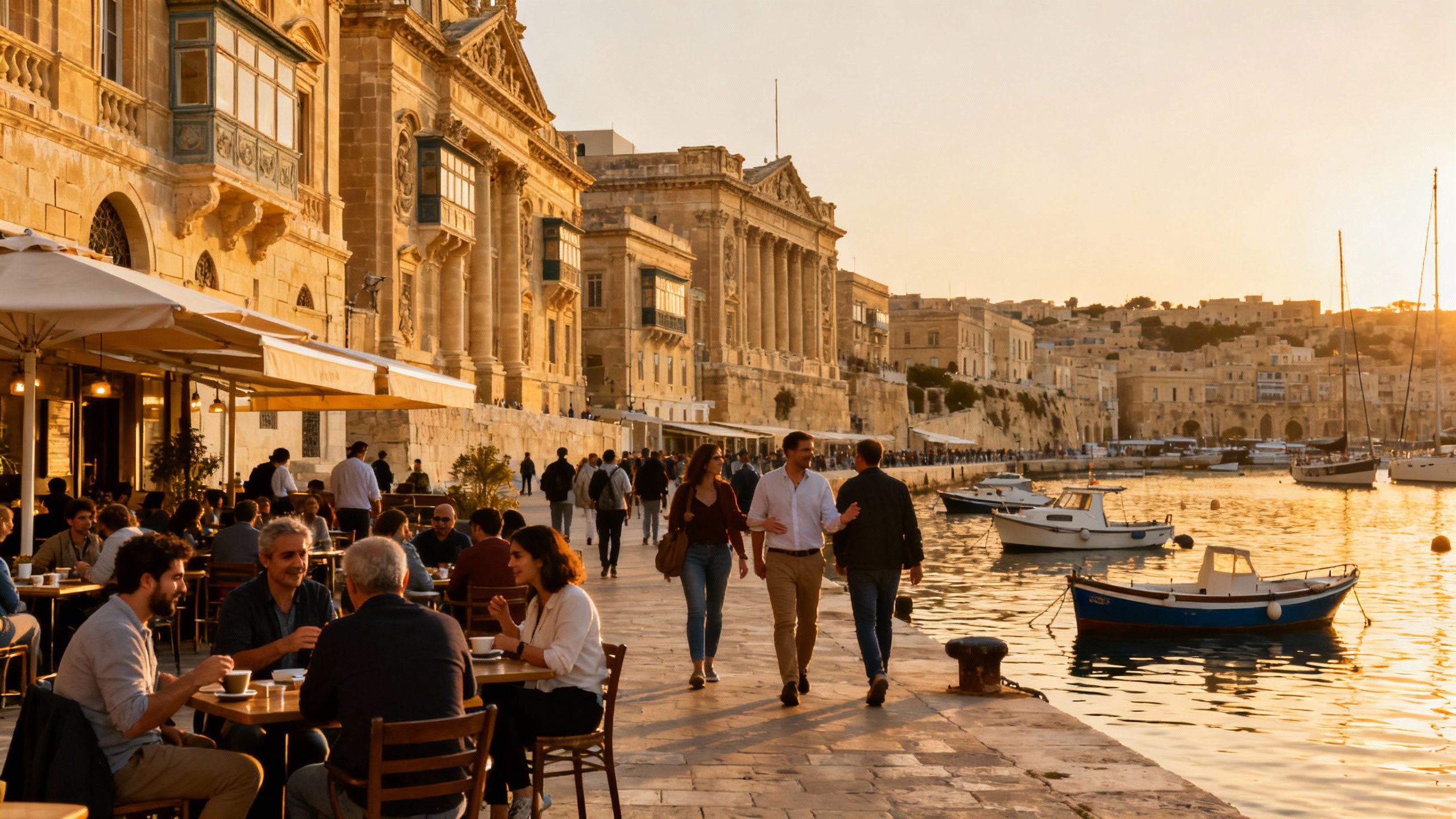How Croatia’s taxes quietly reshape the life you imagined
How Croatia’s municipal property tax, VAT vs. transfer tax and new short‑term rules reshape coastal lifestyle plans — with practical steps to align dreams and budgets.
Imagine a late summer morning in Hvar’s old harbour: fishermen mend nets while a barista in a stone‑arched café pulls ristretto shots for neighbours who discuss last night’s konoba catch. That rhythm — sea, market, small civic life — is what lures many buyers to Croatia. Yet the practicalities of tax and local regulation shape whether that imagined life becomes simple pleasure or a recurring administrative burden. This guide brings the sensory and the statutory together: the everyday of coastal life and the specific fiscal choices that will determine its cost, freedom and longevity.
Living the Croatian life
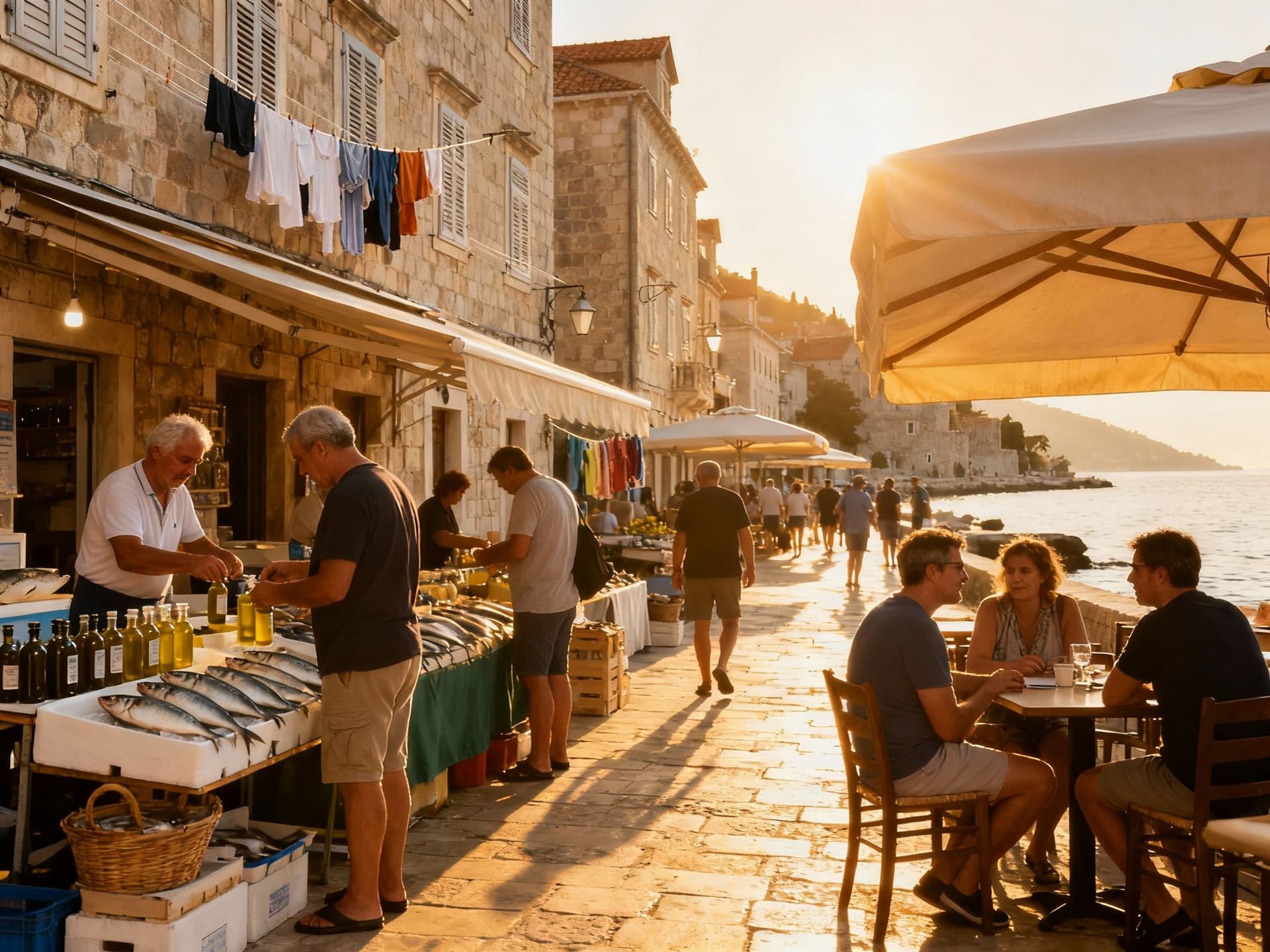
Croatia offers a mosaic of ways to live well: Dubrovnik’s walled terraces, Split’s waterfront promenades, Istrian hill towns with truffle festivals and inland villages where vineyards slope toward the horizon. Daily life is organized around small rituals — morning at a local pekara (bakery), an afternoon espresso at a shaded kafana, an evening aperitivo on a narrow terrace. Weather and seasonality shape that rhythm; summers are social and loud, winters intimate and restorative. Understanding those seasonal shifts matters when you size up a property: will you want year‑round warmth, or a residence that can be prudently closed for months at a time?
Neighbourhoods that feel like home
In Split, liveable streets such as Radićev and Papalićeva blend family homes with corner bakeries and clockwise morning markets — ideal for families or buyers seeking constant life. On the Istrian coast, Rovinj’s Carera promenade rewards morning strolls and has houses whose stonework dates to Venetian masters; inland Motovun is quiet in winter and prized for restored stone villas. In Zagreb, Gornji Grad preserves old‑world grammar in its townhouses, while Črnomerec offers a more contemporary rhythm with easy access to parks. Each micro‑location implies different tax and utility profiles: municipalities set property taxes and tourist rules, so the precise street can materially change annual costs.
Food, markets and weekend rituals
Weekends unfurl differently along the coast and inland: in Zadar you might buy squid at the fish market and share it grilled on a small terrace, while in Istria the weekend is devoted to olive oil tastings and truffle hunts. These local economies — fishers, olive growers, market stalls — are part of the property story: proximity to markets increases desirability but can also place a property inside stricter municipal rules for short‑term rental. For buyers, pairing a lifestyle map (cafés, markets, harbours) with municipal tax maps is a subtle but decisive step.
- Morning espresso on Split’s Riva; Saturday fish market in Hvar; Truffle fair in Motovun; Early‑season sea swims at Stiniva Cove; Village konoba dinners in Istria; Winter walks on Zagreb’s Maksimir Park
Making the move: practical considerations
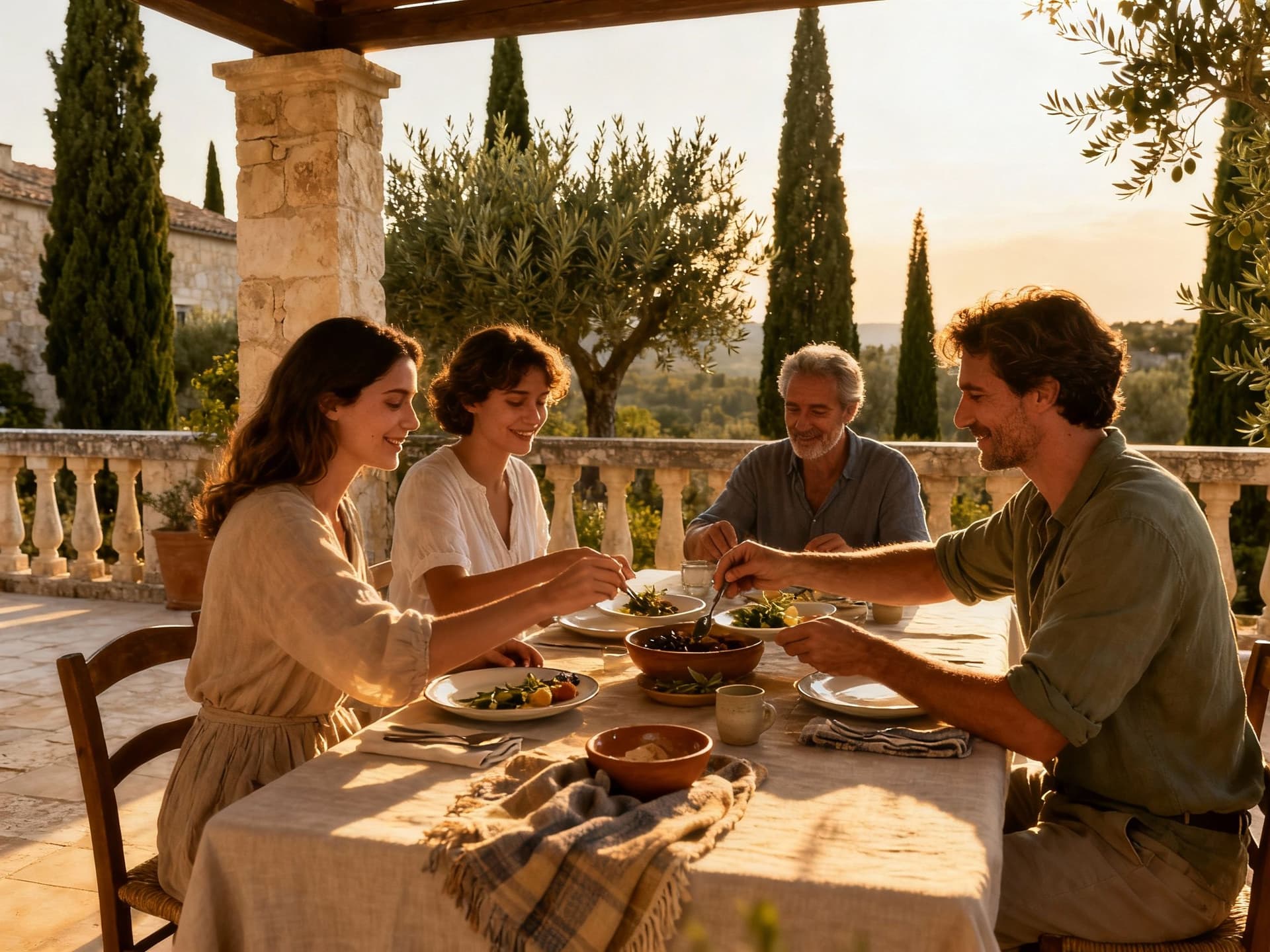
The first fiscal truth to accept is that in Croatia taxation is layered: a 3% real estate transfer tax typically applies to purchases unless VAT applies, and new developments sold within a defined period are subject to the national VAT regime rather than the transfer tax. Separately, an annual property tax now replaces the old holiday‑home levy and is set by each municipality between €0.60 and €8.00 per square metre — a variance that can mean hundreds of euros’ difference annually between neighbouring towns. These are not theoretical numbers: they affect cashflow, net yield for rental use, and decisions on whether to operate a property year‑round or seasonally.
Property types and what they cost you over time
A restored stone townhouse has different tax, maintenance and insurance profiles from a new coastal condominium. Older buildings often sit in zones with heritage restrictions that limit extensions but benefit from lower VAT exposure on purchase; new builds are commonly subject to VAT at purchase but sometimes offer clearer energy performance and lower immediate maintenance. Think in terms of total ownership cost rather than price per square metre: municipal property tax, maintenance of historic fabric, and compliance for rental licences all compound over years.
How local experts preserve your lifestyle intent
A local lawyer or agency will translate municipal decisions, neighbour‑consent rules for short‑term rentals and registerational details into practical choices. In some condominiums, rules now require high co‑owner consent to run short‑term lets — a non‑obvious restriction that can nullify a rental business model if you misread the documents. Engage counsel early, and ask for explicit municipal fee schedules and a recent copy of the building’s rules; this protects the lifestyle you imagined when you first fell for a neighbourhood.
- Decide lifestyle intent (primary home, seasonal, rental) and map taxes accordingly; Obtain municipal tax decision for the property to confirm annual €/m²; Confirm whether sale attracts VAT or a 3% transfer tax; Review condominium statutes for rental restrictions and neighbour‑consent clauses; Commission an independent survey that includes expected maintenance for historic fabric
Insider knowledge: what expats wish they'd known
Many newcomers are surprised by how quickly municipal rules have tightened to prioritise local housing over tourist supply. Where once a coastal flat could be switched between seasons with ease, recent national conversation and local measures now favour longer leases and tighter registration for short‑term letting. The practical consequence is simple: a lifestyle premised on high seasonal income now meets higher regulatory friction, and in some towns new licences or neighbour consent may be limited or costly.
Language, integration and daily administration
You will pay fewer surprise fees if you learn the administrative cadence: tax notices, municipal decisions and eVisitor registrations are often in Croatian and follow precise deadlines. Local professionals — a bilingual notary, a tax advisor, a property manager — are not luxuries but functional translators of civic practice. Join a neighbourhood association and observe market rhythms for a season before committing to rental strategies; integration reduces friction and often reveals practical exemptions and local norms.
Short‑term rental taxation now includes special rates and obligations: some regimes use a simplified income tax for seasonal lets while municipalities impose tourist taxes and require eVisitor registration for all guests. For buyers oriented to income, model two scenarios — conservative (long‑term letting) and optimistic (short‑term letting subject to new constraints) — and compare net yield after municipal property tax and occupancy limits. The wiser path blends lifestyle use with stable long‑term leases where possible, preserving the house for personal use without over‑relying on seasonal revenue.
- Keep records of all guest registrations; Confirm whether your property is VAT‑exempt on purchase; Ask for the municipality’s current €/m² decision before offer; Verify condominium statutes for an 80% consent clause on rentals; Budget for higher property tax in sought‑after coastal towns
From the market’s vantage, Croatia offers a rare blend of heritage and coastal life, but that romance meets municipal detail at the moment of purchase. Read the tax signals: transfer tax or VAT on purchase; annual property tax set by municipality; rental registration and guest‑tax regimes that change net yield. A considered purchase pairs a neighbourhood you love with a fiscal plan that preserves it. If you wish to explore specific streets or properties, an initial municipal tax check and a concise legal memo will convert longing into a clear, actionable plan.
Relocating from London to Mallorca in 2014, I guide UK buyers through cross-border investment and tax considerations. I specialise in provenance, design integrity, and long-term value.
